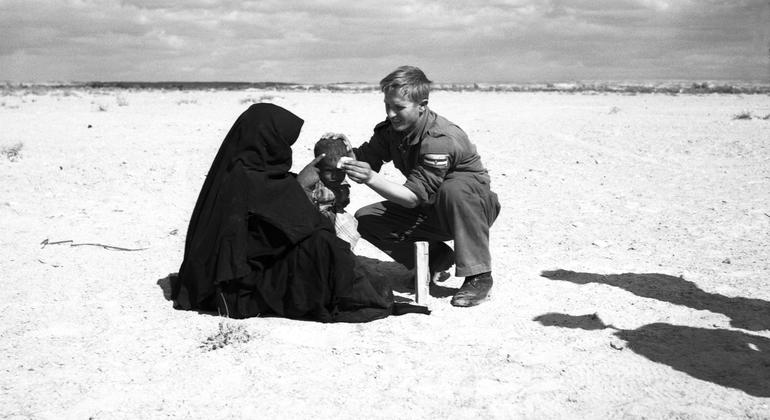The crisis began when Egypt nationalised the Suez Canal Company in July 1956, and France and the United Kingdom protested. By October of that year, Israeli forces launched an attack on Egypt and occupied Sinai, with British and French troops landing soon after in the Suez Canal Zone.
The UN was unable to resolve the matter in the Security Council, which met for discussions on 31 October and failed to adopt a decision after France and the UK used their veto power, a privilege of the organ’s permanent members.
Those vetoes triggered provisions in the “Uniting for Peace” resolution, adopted by the General Assembly in 1950, which states that if the Council, “because of a lack of unanimity of the permanent members, fails to exercise its primary responsibility for the maintenance of international peace and security in any case where there appears to be a threat to the peace, breach of peace or action of aggression, the General Assembly shall consider the matter immediately with a view to making appropriate recommendations to Member for collective measures”.
Two firsts in UN history
The Uniting for Peace resolution’s terms also stated that an emergency special session could be convened within 24 hours, so that’s what the General Assembly did a day after the Council vetoes.
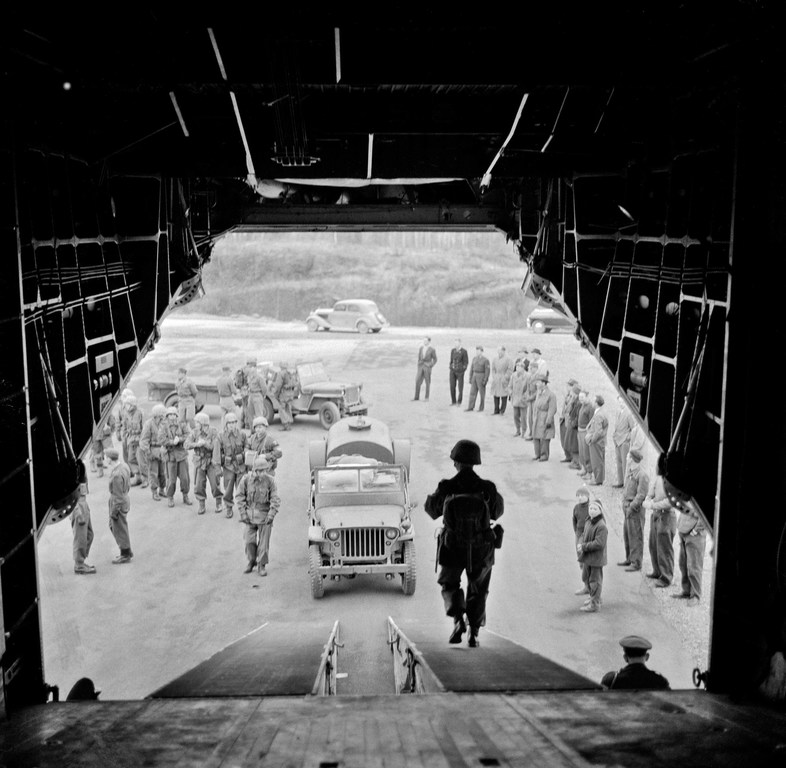
A Norwegian military unit of UNEF gets ready to depart from Fornebu airfield, near Oslo, Norway, on 13 November 1956. (file)
From 1 to 10 November in its first ever emergency special session, the Assembly called for a ceasefire and the withdrawal of all foreign forces, with then-UN Secretary-General Dag Hammarskjöld providing the latest updates.
“We are now less than two hours from the time set for an agreed ceasefire, without commitments from the three Governments, which so far have not indicated their acceptance,” the UN chief told the world body.
The Assembly then requested that, within 48 hours, the Secretary-General should present a plan for the establishment of a United Nations force to secure and supervise the cessation of hostilities, so he did.
His plan was a blueprint for establishing the first UN peacekeeping force – the UN Emergency Force (UNEF). The mandate was to supervise the withdrawal of the three occupying forces and, after the withdrawal was completed, to act as a buffer between the Egyptian and Israeli forces and to provide impartial supervision of the ceasefire. The UN Emergency Force was armed, but the units were to use their weapons only in self-defence and even then, with utmost restraint.
Though more than 100 peacekeepers were killed, the operation successfully oversaw the withdrawal of British, French and Israeli armed forces from Egypt.
Following the swift dispatch of UNEF to the area, the French and British forces left the Suez Canal Zone by 22 December 1956, and the withdrawal of the Israeli forces was completed by 8 March 1957.
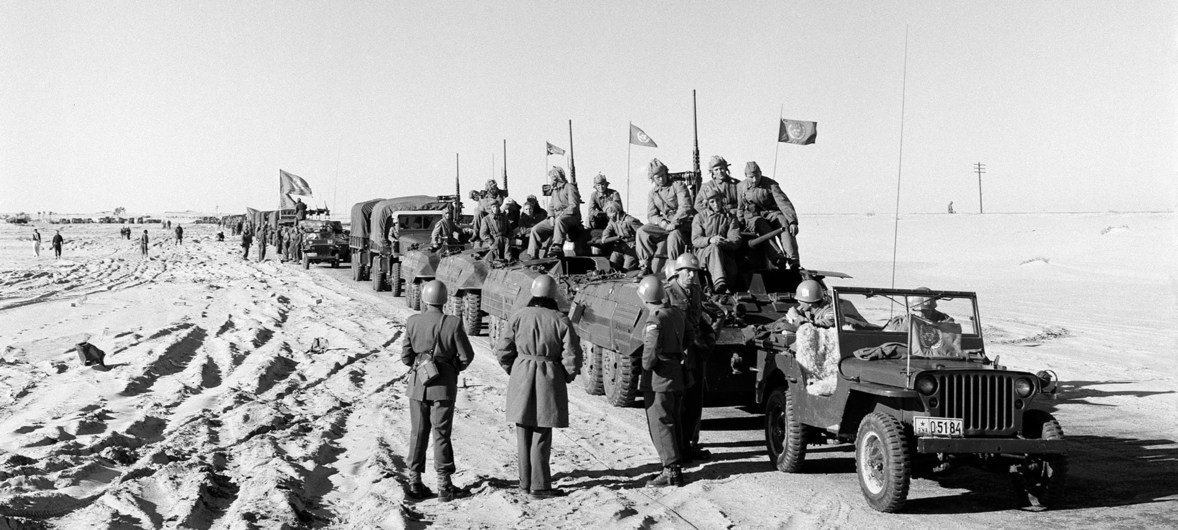
A UNEF motorised column flying the UN flag wait in January 1957 for the Israelis to evacuate El Arish to move into that city. (file)
UN clears the blocked Suez Canal
UNEF’s creation represented a significant innovation within the UN. It was not a peace enforcement operation, as envisaged in Article 42 of the UN Charter, but a peacekeeping operation to be carried out with the consent and the cooperation of the parties to the conflict.
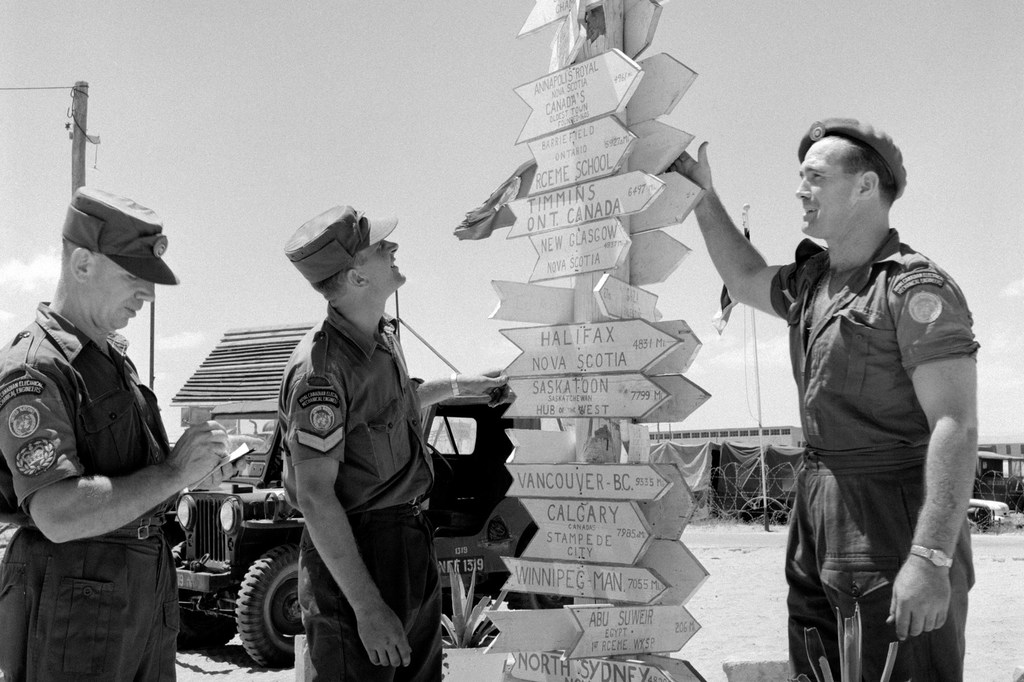
To remind them of home, UNEF personnel and members of the Royal Canadian Electrical and Mechanical Engineers built a signpost outside their workshop in Egypt, with various distances to cities in Canada. (file)
Stationed entirely on Egyptian territory with the consent of the government, UNEF patrolled the Egypt-Israel armistice demarcation line and the international frontier to the south of the Gaza Strip and brought relative quiet to a long-troubled area.
The Suez Canal, blocked because of the conflict, was cleared by the United Nations.
The UN Emergency Force comprised 6,073 military personnel at its peak, from Brazil, Canada, Colombia, Denmark, Finland, India, Indonesia, Norway, Sweden and then Yugoslavia.
There were fatalities: 109 military personnel and one local staff.
At the request of the Egyptian Government, which informed the Secretary-General that it would no longer consent to the stationing of the Force on Egyptian territory and in Gaza, UNEF withdrew its personnel in May and June 1967.
Watch UN Video’s Stories from the UN Archive latest episode on UNEF here.
UN News’s #ThrowbackThursday series showcases epic moments across UN history, cultivated from the UN Audiovisual Library’s 49,400 hours of video and 18,000 hours of audio recordings.
Catch up on UN Video’s Stories from the UN Archive playlist here and our accompanying series here.
Join us next Thursday for another dive into history.
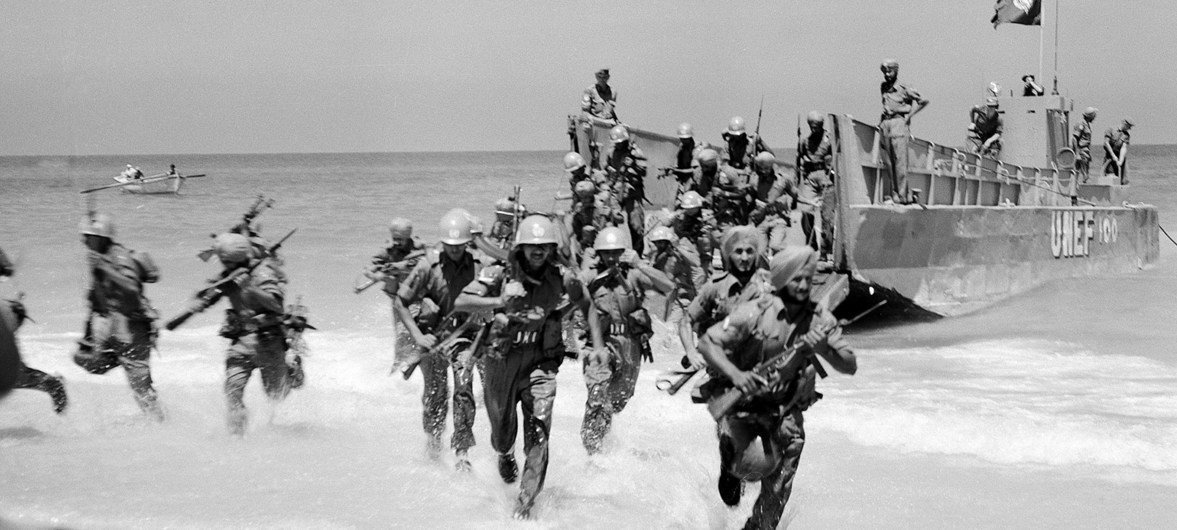
Troops of the UNEF contingent from India practice evacuation and landings on Abu Beach in Rafah, Gaza, in 1958. (file)

